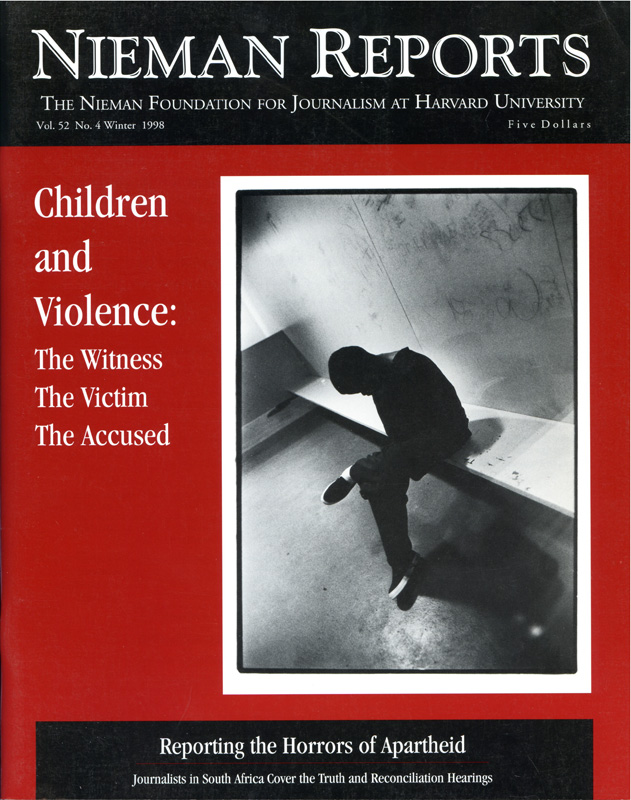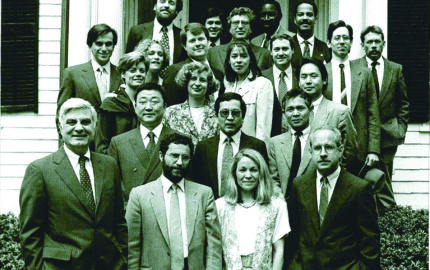The dizzying whirl of spin and counterspin which marked the months of coverage of President Clinton’s sex life has now come to an end. It’s time to ask what we’ve learned about journalism today.
The results of the grand jury investigation are on the table in the report of the independent counsel to Congress and we can come to some conclusions.
Maybe the most important is that contrary to White House accusations, the relative handful of reporters who did the bulk of the original reporting of the Starr investigation were not trafficking in false leaks and fabrications. What emerges is a picture of a news media culture that in breaking stories usually relied on legitimate sources. The initial reporting of certain now well-known stories, such as the blue dress, were proven right, and none was made out of whole cloth.
But other findings of the study make it clear that it is a dangerous oversimplification to say the press has been vindicated. For even in carefully reported stories journalists tended to accept interpretations from their sources uncritically helping perpetuate the hopeless feeling that there was no truth to be found in Washington. There was, for example, no evidence in Starr’s report to Congress that President Clinton had helped write a set of talking points to help Monica Lewinsky lie or of an independent witness to events in the Oval Office—both of which were widely reported on the basis of “informed sources.”
The most troubling indication of a journalism losing its way was the tendency by the reporters to adopt the perspective of the investigators over those being investigated. While this has always been a danger in source reporting especially for investigative journalists—Richard Jewell should have been warning enough on this point—the apparent conclusion of the special prosecutor himself should give us all pause. In court papers defending himself against charges he had violated federal rules by leaking grand jury information to the press, Judge Starr alludes to his relationship with reporters as that of an investigator to an informant.
Whether or not that analogy is correct, the fact it was raised by the prosecutor highlights the fact the journalists were not reporting on activities of his office and its treatment of the people drawn in to the grand jury process—long considered the role for watchdog journalism. Nor, as of this writing, has there been any effort by the Washington press corps to look into Judge Starr’s characterization of the reporters who dealt with his office during this period.
We can now also see that the commenting culture is a major part of the news business. Journalism is being pushed aside to make room for a growing group of loosely credentialed, self-interested performers whose modus operandi is like that once used to describe New York Senator Chauncey Depew who, and I’ll paraphrase: Would launch an army of words which wandered aimlessly over the field until it came across a lonely fact and carried it kicking and screaming in their midst until it died of overuse and abuse.
These modern day Depew’s, who do no work of journalism, prey on the facts produced by a handful of journalists to fill the world with unsubstantiated suspicion and wild speculation that threaten to undermine the reporting culture. Worse, the major news organizations are aiding and abetting its growth.
What’s emerging may be the outlines of the next phase of a news business organizing for competition in cyberspace. The electronic media seem to be compartmentalizing, creating venues to appeal to the mass audience for gossip and speculation while preserving the traditional venue for news based on journalism.
And all of this reminds us that the new world of unlimited competition in a deadline-every-minute world is here to stay and will require total concentration and commitment on the part of those who believe in journalism in the public interest. Finally, if Matt Drudge is a symbol of the power of the new technology to override the methodology of journalism to capitalize on a public appetite for scandal and gossip, there is a counterforce as well.
Anyone tuned in on the Web on October 14, 1998 saw the power of the Internet to spawn a public pressure for more responsible behavior on the part of institutions of power, including the press. On that day an organization called “Move On” invested $89.95 to post a notice to organize a petition drive to let Congress—and by extension the press—know that they were tired of the focus on the Clinton affair to the exclusion of other more important issues and events. Within weeks they had gathered and delivered a quarter of a million signatures on their petition to Congress to censure President Clinton for his behavior and move on to more important problems facing the public.
It is just possible that those citizens who are hungry for a responsible public interest press can, through the agency of the Internet, come together and form the demand side market for such a press to offset the counter pressure that now prevails in the financial markets.
The results of the grand jury investigation are on the table in the report of the independent counsel to Congress and we can come to some conclusions.
Maybe the most important is that contrary to White House accusations, the relative handful of reporters who did the bulk of the original reporting of the Starr investigation were not trafficking in false leaks and fabrications. What emerges is a picture of a news media culture that in breaking stories usually relied on legitimate sources. The initial reporting of certain now well-known stories, such as the blue dress, were proven right, and none was made out of whole cloth.
But other findings of the study make it clear that it is a dangerous oversimplification to say the press has been vindicated. For even in carefully reported stories journalists tended to accept interpretations from their sources uncritically helping perpetuate the hopeless feeling that there was no truth to be found in Washington. There was, for example, no evidence in Starr’s report to Congress that President Clinton had helped write a set of talking points to help Monica Lewinsky lie or of an independent witness to events in the Oval Office—both of which were widely reported on the basis of “informed sources.”
The most troubling indication of a journalism losing its way was the tendency by the reporters to adopt the perspective of the investigators over those being investigated. While this has always been a danger in source reporting especially for investigative journalists—Richard Jewell should have been warning enough on this point—the apparent conclusion of the special prosecutor himself should give us all pause. In court papers defending himself against charges he had violated federal rules by leaking grand jury information to the press, Judge Starr alludes to his relationship with reporters as that of an investigator to an informant.
Whether or not that analogy is correct, the fact it was raised by the prosecutor highlights the fact the journalists were not reporting on activities of his office and its treatment of the people drawn in to the grand jury process—long considered the role for watchdog journalism. Nor, as of this writing, has there been any effort by the Washington press corps to look into Judge Starr’s characterization of the reporters who dealt with his office during this period.
We can now also see that the commenting culture is a major part of the news business. Journalism is being pushed aside to make room for a growing group of loosely credentialed, self-interested performers whose modus operandi is like that once used to describe New York Senator Chauncey Depew who, and I’ll paraphrase: Would launch an army of words which wandered aimlessly over the field until it came across a lonely fact and carried it kicking and screaming in their midst until it died of overuse and abuse.
These modern day Depew’s, who do no work of journalism, prey on the facts produced by a handful of journalists to fill the world with unsubstantiated suspicion and wild speculation that threaten to undermine the reporting culture. Worse, the major news organizations are aiding and abetting its growth.
What’s emerging may be the outlines of the next phase of a news business organizing for competition in cyberspace. The electronic media seem to be compartmentalizing, creating venues to appeal to the mass audience for gossip and speculation while preserving the traditional venue for news based on journalism.
And all of this reminds us that the new world of unlimited competition in a deadline-every-minute world is here to stay and will require total concentration and commitment on the part of those who believe in journalism in the public interest. Finally, if Matt Drudge is a symbol of the power of the new technology to override the methodology of journalism to capitalize on a public appetite for scandal and gossip, there is a counterforce as well.
Anyone tuned in on the Web on October 14, 1998 saw the power of the Internet to spawn a public pressure for more responsible behavior on the part of institutions of power, including the press. On that day an organization called “Move On” invested $89.95 to post a notice to organize a petition drive to let Congress—and by extension the press—know that they were tired of the focus on the Clinton affair to the exclusion of other more important issues and events. Within weeks they had gathered and delivered a quarter of a million signatures on their petition to Congress to censure President Clinton for his behavior and move on to more important problems facing the public.
It is just possible that those citizens who are hungry for a responsible public interest press can, through the agency of the Internet, come together and form the demand side market for such a press to offset the counter pressure that now prevails in the financial markets.



